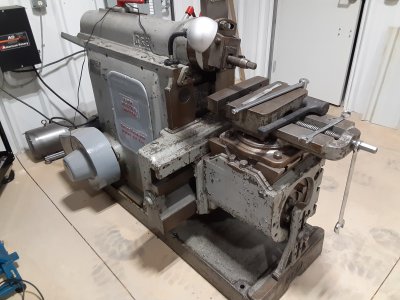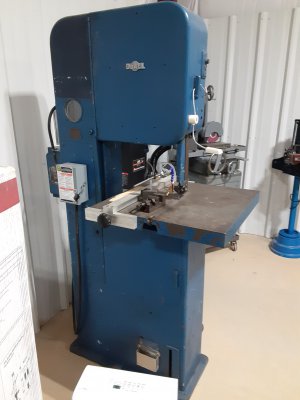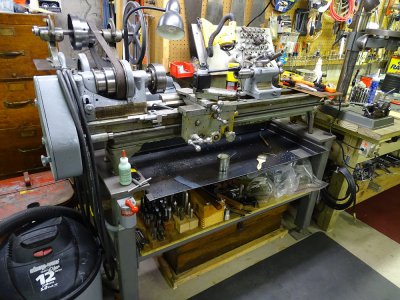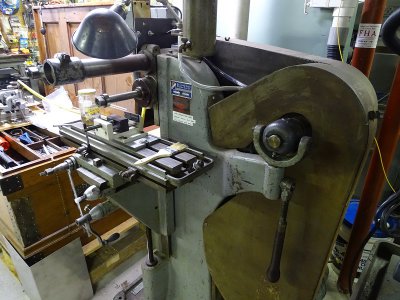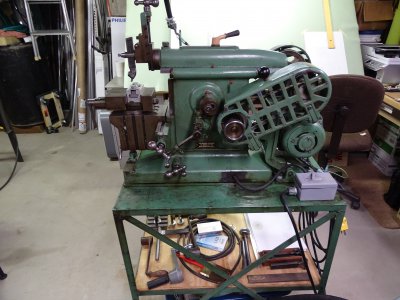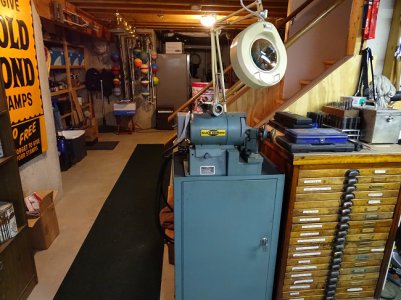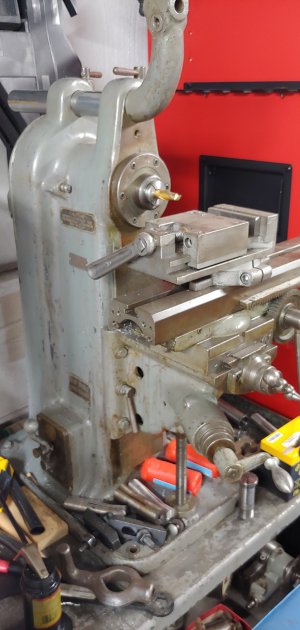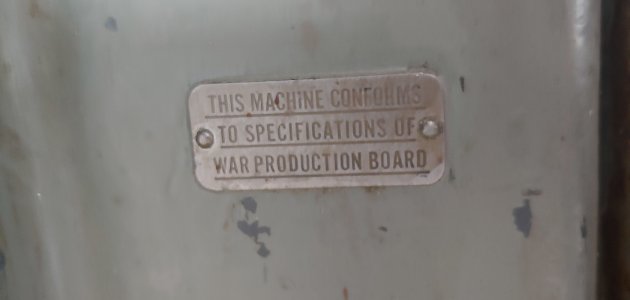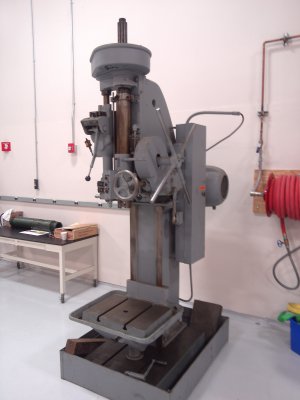-
Welcome back Guest! Did you know you can mentor other members here at H-M? If not, please check out our Relaunch of Hobby Machinist Mentoring Program!
You are using an out of date browser. It may not display this or other websites correctly.
You should upgrade or use an alternative browser.
You should upgrade or use an alternative browser.
Show us your war time production machine tools
- Thread starter Janderso
- Start date
- Joined
- Apr 14, 2014
- Messages
- 3,166
As mentioned earlier "wartime" machines covers a broad area. I have several machines in the shop that were produced during "wartime" periods. Some were built for private industries supporting the war effort, and some were built for the military. The oldest is a 1916 Seneca Falls lathe. It was built in 1916 for a company that was supplying vending machines to military bases in WWI.
The next 2 are from the WWII era. The AMMCO shaper came out of the Badger Army Ammunition Depot in Baraboo Wisconsin. The US Machine Tools horizontal mill came from the Oscar Mayer plant in Madison Wisconsin. Oscar had huge contracts supplying the military both in the US and overseas. Even Rosie the Riveter used one in a poster for wartime production.
The last one is a Black Diamond drill grinder. It was made in 1974 as part of a military contract during the Vietnam War. It spent most of it's life unused in a National Guard Equipment Repair Depot warehouse. For some reason they bought the 3 phase machine even though they had no 3 phase power in the repair depot.
The next 2 are from the WWII era. The AMMCO shaper came out of the Badger Army Ammunition Depot in Baraboo Wisconsin. The US Machine Tools horizontal mill came from the Oscar Mayer plant in Madison Wisconsin. Oscar had huge contracts supplying the military both in the US and overseas. Even Rosie the Riveter used one in a poster for wartime production.
The last one is a Black Diamond drill grinder. It was made in 1974 as part of a military contract during the Vietnam War. It spent most of it's life unused in a National Guard Equipment Repair Depot warehouse. For some reason they bought the 3 phase machine even though they had no 3 phase power in the repair depot.
Attachments
Last edited:
- Joined
- Jan 10, 2019
- Messages
- 1,042
Huh, I never gave any thought to how old vending machines might be, and wonder what ones from back then were like. I'd wager that even back then, you'd see people beating on the front of them, trying to get their snack to drop...... The oldest is a 1916 Seneca Falls lathe. It was built in 1916 for a company that was supplying vending machines to military bases in WWI.
Boy that's a slippery slope, searching on "oldest vending machines". Here's one from Britain in the 1920s - and yes, I'm now off-topic!
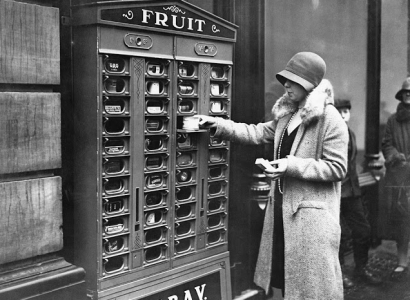
Last edited:
- Joined
- Oct 14, 2013
- Messages
- 995
This drill press came with a glued in, typewritten memo that said parts delivery may be affected by the war production board... It was rated to drill a 3" hole in steel using a #5 Morse taper! It got a new life as an oilfield plug milling test rig. Somewhere I have a photo of me sitting on the table, but darned if I can find it! One of the fun/wacky features on it was the two rotating oil drippers; one spun on top of a jack shaft and the other orbited around the splined shaft. You had to be careful not to fill them up too much or they would sling oil out the fill fitting. They were about 8' off the floor, so you had to have a ladder handy every morning you ran it.
My first lathe was actually build on D-day...
My first lathe was actually build on D-day...
Attachments
- Joined
- Mar 26, 2018
- Messages
- 8,409
Aaron,My Diamond horizontal mill was finished on December 28, 1944, 2 days after Patton's 4th Armored linked up with the 101st ending the siege of Bastogne. The Clausing is almost 20 years younger so made during a different war.
View attachment 364122
View attachment 364123
I have a pre-war (1932) Rivet lathe with US Navy Markings which could have still been in use by WW2.
View attachment 364124
View attachment 364126
I haven't been to your shop. The Rivett is sweet!
The horizontal mill is perfect for a hobby shop!
And of course I love your Clausing.
Awesome tools man!
- Joined
- Mar 26, 2018
- Messages
- 8,409
That's perfectly acceptable. That's a neat pic.Here's one from Britain in the 1920s - and yes, I'm now off-topic!
- Joined
- Mar 26, 2018
- Messages
- 8,409
So was war time production compromised in any way?My first lathe was actually build on D-day...
Did they let up on QC?
Lots of machines were made during the WW2 years. Many were probably made in factories with female employees.
I know they let the finishes slide but I'm not so sure about quality and tolerances.
Anyone have any ideas on this subject?


